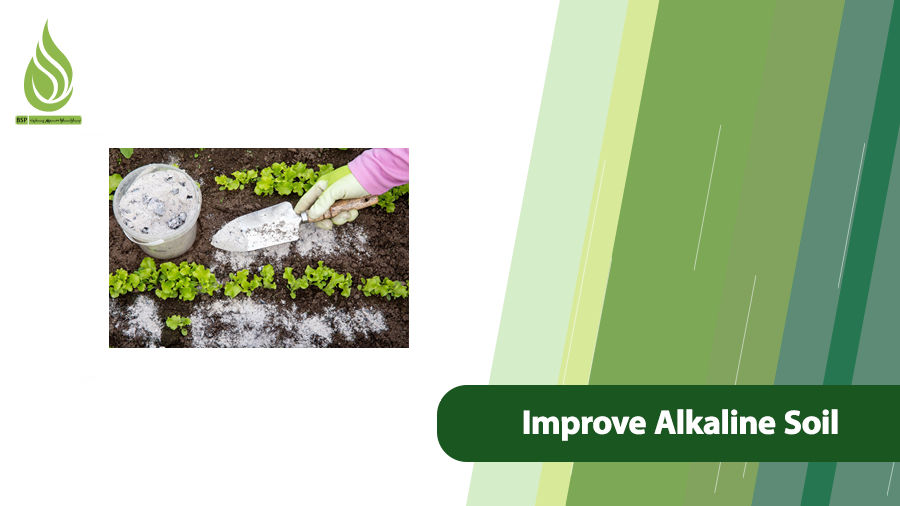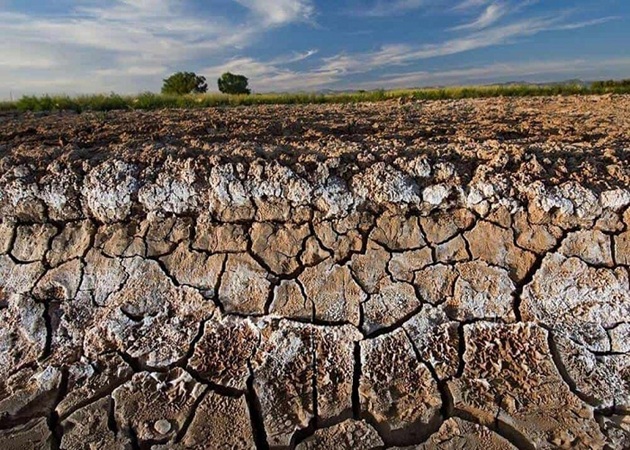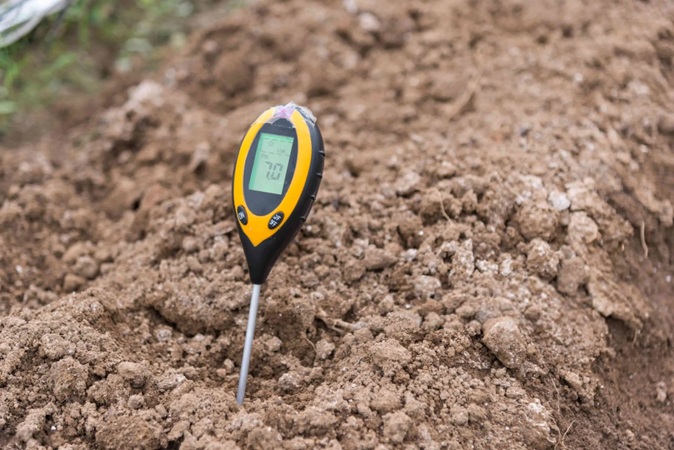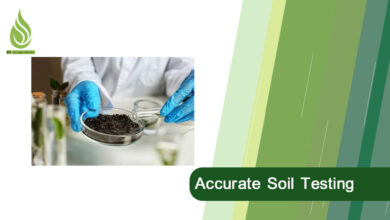
Why Does Soil Become Alkaline? How to Improve Alkaline Soil?
Soil is the foundation of plant and tree growth in agriculture. Its quality directly impacts plant health, productivity, and overall farm success. One common challenge farmers face worldwide is alkaline soil, which can hinder nutrient absorption and lead to lower yields. Alkaline soil, often found in arid and semi-arid regions, makes it tough for plants to access essential nutrients, resulting in stunted growth and reduced harvests. In this guide, we’ll explore the reasons soil becomes alkaline, its key characteristics, the problems it causes for crops, and practical ways to improve it.
Key Characteristics and Global Prevalence of Alkaline Soil
Soil pH is a measure of how acidic or alkaline the soil is, ranging from zero to fourteen. A pH above seven indicates alkaline soil, with levels over seven point five often signaling significant alkalinity. Alkaline soils are prevalent in dry and semi-arid areas where low rainfall and high evaporation rates prevent salts and minerals from leaching away. These soils affect vast regions, including the Middle East, North Africa, Australia, Eurasia, and parts of the United States and China. According to the FAO, salt-affected soils, which often overlap with alkaline conditions, impact over eight hundred thirty-three million hectares worldwide, with the Middle East being one of the most affected areas due to its arid climate and irrigation challenges.

In the Middle East, alkaline soils are common in countries like Iran, Iraq, Saudi Arabia, and Jordan, where natural geological factors and human activities exacerbate the issue. These soils typically form in environments with limited water movement, leading to the accumulation of bases like sodium, calcium, and magnesium carbonates.
Here are the main features of alkaline soil:
- High pH Levels: Anything above seven point five is considered alkaline, creating an environment where many nutrients become less available to plants.
- Reduced Solubility of Micronutrients: Elements like iron, manganese, copper, and zinc bind tightly in high-pH soils, making them unavailable. This often results in chlorosis, or yellowing of leaves, a common sight in alkaline-affected fields.
- Insoluble Phosphate Compounds: Phosphorus, a key nutrient for plant energy and root development, reacts with calcium in alkaline soils to form insoluble calcium phosphate, starving plants of this essential element.
- Lower Activity of Beneficial Microorganisms: Soil bacteria and fungi that break down organic matter thrive in neutral to slightly acidic conditions. In alkaline soils, their activity drops, slowing nutrient cycling and soil organic matter decomposition.
- Presence of Calcium Carbonate: Often called lime, this compound raises pH and can form a hard crust on the soil surface, known as caliche, which blocks root penetration and water infiltration.
- Soil Salinity: Many alkaline soils also have high salt levels, especially in areas with poor drainage or excessive irrigation, compounding stress on plants.
- Darker Color: Due to dispersed organic matter on clay particles, alkaline soils may appear darker, though this doesn’t always indicate fertility.
These characteristics aren’t just theoretical; they directly influence farming outcomes. In the Middle East, where agriculture relies heavily on irrigation, alkaline soils cover significant portions of arable land, limiting crop diversity and yields. Similar issues affect semi-arid zones, from California’s Central Valley to Australia’s wheat belts, where farmers must adapt to maintain productivity.
The Challenges for Plant Growth and Agriculture
Alkaline soil might look fertile at first glance, but it poses serious hurdles for plants. The high pH disrupts nutrient balance, leading to deficiencies even when fertilizers are applied. Saline-alkaline soils reduce crop yields by up to seventy percent for staples like rice and legumes, according to recent studies. In the Middle East and North Africa (MENA) region, soil salinity and alkalinity are major threats, affecting over twenty percent of irrigated lands and contributing to food security challenges.
Key problems include:
- Nutrient Uptake Issues: Plants struggle to absorb iron, zinc, manganese, and phosphorus, leading to deficiencies that weaken growth and immunity.
- Leaf Yellowing (Chlorosis): Iron deficiency is rampant, causing leaves to turn yellow while veins stay green, a telltale sign in crops like citrus and soybeans.
- Stunted Root Development: High pH and salinity restrict root expansion, making plants more vulnerable to drought and less efficient at taking up water.
- Poor Product Quality: Fruits and vegetables from alkaline soils often have inferior taste, color, and size, reducing market value.
- Decline in Soil Biodiversity: Fewer beneficial microbes mean slower organic matter breakdown, leading to poorer soil structure over time.
- Reduced Water Permeability: Compacted or crusted surfaces prevent water from soaking in, increasing runoff and erosion risks.
- Increased Disease Susceptibility: Stressed plants are more prone to pests and diseases, raising input costs for farmers.
These issues are amplified by climate change, with rising temperatures and erratic rainfall worsening soil degradation. For instance, in Iran and Egypt, alkaline soils have led to declining wheat and date palm yields, forcing farmers to seek amendments. The economic toll is staggering, with billions lost annually in reduced agricultural output. Addressing these challenges requires targeted soil management to restore balance and support sustainable farming.

How to Detect It?
Identifying alkaline soil early is crucial for effective management. Without testing, you might waste resources on ineffective treatments. Here’s how to check:
- Laboratory Soil Testing: The gold standard. Send samples to a certified lab for precise pH measurement and nutrient analysis. Labs like those affiliated with the USDA or local agricultural extensions provide detailed reports.
- Home Testing Kits: Affordable and user-friendly, these kits give a quick pH estimate. They’re ideal for initial screening but less accurate than lab tests.
- pH Indicator Strips (Litmus Paper): Dip strips into a soil-water slurry for a basic reading; blue or purple indicates alkalinity.
For best results, follow proven sampling practices from sources like Penn State Extension. Collect samples from ten to fifteen spots per field, avoiding edges, wet areas, or recent fertilizer zones. Use clean tools, mix samples thoroughly, and test every two to four years, or more often if issues arise.
Effective Strategies to Improve Alkaline Soil
Improving alkaline soil involves lowering pH and enhancing nutrient availability. A multi-faceted approach works best, combining chemical amendments, organic matter, and cultural practices. Recent research highlights innovative options like acidified biochar and elemental sulfur for quick pH adjustments.

Start with sulfur-based amendments, as bacteria convert sulfur to sulfuric acid, gradually reducing pH. Elemental sulfur can lower pH by one point in three to six months under ideal conditions. Gypsum (calcium sulfate) is excellent for sodic soils, replacing sodium with calcium to improve soil structure.
For fertilizers, avoid those that raise pH, like sodium nitrate. Instead, opt for acidifying options:
- Organic Materials and Composts: Adding compost, aged manure, dry leaves, or peat moss boosts organic matter, encourages microbial activity, and slowly lowers pH. These improve soil structure and water retention.
- Ammonium-Based Fertilizers: These are game-changers for alkaline soils. Ammonium sulfate, for example, provides twenty-one percent nitrogen (as ammonium) and twenty-four percent sulfur, acidifying the soil while feeding plants. It lowers pH effectively, enhancing micronutrient uptake and crop resistance to diseases. Ammonium nitrate and ammonium phosphate also help acidify while supplying key nutrients. To understand this better, we suggest you take a look at our guide to ammonium sulphate vs ammonium nitrate.
Ammonium sulfate stands out as a top choice for alkaline soil management. It not only delivers nitrogen for vigorous growth but also sulfur, which supports protein synthesis and enzyme functions in plants. In alkaline conditions, it helps unlock iron and phosphorus, preventing chlorosis and boosting yields. Recent studies show it can improve soil health in regions like Missouri and beyond, making it ideal for Middle Eastern farms facing similar issues. For farmers looking to buy high-quality ammonium sulfate fertilizer, it’s widely available and offers economic benefits through better nutrient efficiency and reduced long-term soil problems.
Applying it at rates based on soil tests can transform alkaline fields into productive ones.
- Potassium Sulfate: If potassium is deficient, this fertilizer supplies it without raising pH. It aids iron and phosphorus absorption and strengthens plant disease resistance.
- Micronutrient Fertilizers: Use zinc sulfate, manganese sulfate, or iron chelates to address deficiencies common in alkaline soils.
In another recent research, organic amendments like biochar combined with seaweed fertilizers have shown promise in alkaline soils, improving maize growth and soil quality. In the Middle East, biochar has reduced soil salinity by ten percent and improved water efficiency by eight point seven percent. These additions complement traditional methods, offering sustainable options for long-term soil health.
Additional Methods for Improvement

Beyond fertilizers, holistic practices enhance results:
- Proper Irrigation: Regular, deep watering with fresh water flushes salts. Avoid saline or alkaline water sources, common in the Middle East.
- Improved Drainage: Install drains to prevent salt buildup, especially in low-lying areas.
- Cover Crops: Plants like clover add organic matter, reduce erosion, and improve structure.
- Humic Acid Applications: These organic compounds enhance nutrient uptake and slightly lower pH.
- Gypsum Use: Replaces sodium, improving water and nutrient absorption.
Timing matters: Apply sulfur and organics in fall (four to five months before growth), acidifying fertilizers like ammonium sulfate in late winter, and micronutrients in spring. Consistent watering maximizes effects.
The Critical Role of Soil Testing
Before any amendments, test your soil; it’s the foundation of smart farming. Each field has unique traits; what works in one area might not in another. Soil tests reveal pH, nutrient levels (nitrogen, phosphorus, potassium, iron, zinc), and guide precise applications, preventing waste and overuse.
Best practices include sampling in fall or spring, using a probe for six to eight inch depths, and collecting from multiple zones. Dry samples before sending to labs. In the Middle East, variability is high, and annual tests can track changes from irrigation or climate. This scientific step boosts efficiency, cuts costs, and promotes sustainable agriculture.
Why Soil Becomes Alkaline?
Alkaline soil develops from natural processes or human actions. Arid climates with low rainfall (less than five hundred mm annually) and high evaporation cause salt accumulation. Natural minerals like sodium carbonate weather into the soil, raising pH.
Primary causes include geological factors, parent rocks rich in lime, and hydrological issues like rising water tables. Human factors amplify this: over-irrigation with hard or saline water, poor drainage, and repeated use of alkaline fertilizers like sodium nitrate. Climate change worsens it by increasing evaporation rates.
In Australia and North Africa, insufficient leaching leaves bases in the soil. Addressing root causes through better water management and amendments like ammonium sulfate can prevent escalation.
Conclusion
Alkaline soil is a widespread challenge, but with the right knowledge and tools, you can turn it into an opportunity for better farming. By understanding its causes, detecting it early, and using amendments like ammonium sulfate fertilizer, organic matter, and innovative options from recent research, you’ll improve nutrient availability, lower pH, and enhance crop performance. Focus on soil testing and sustainable practices to ensure long-term success, whether in the Middle East or globally.
If you’re ready to tackle alkaline soil, start with a test and consider ammonium sulfate for its dual benefits in nutrition and acidification. For more on purchasing high-quality ammonium sulfate fertilizer, explore reliable suppliers tailored to your needs. Healthy soil means thriving agriculture; let’s make it happen.

